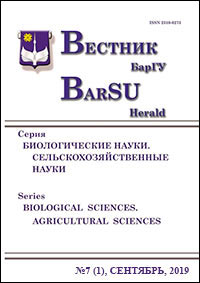NEW DATA ON THE CENOZOIC MOLLUSCS OF THE GENERA MYA,CYRTODARIA AND NEPTUNEA (MOLLUSCA: HIATELIDAE, MYIDAE,BUCCINIDAE) OF THE KANIN AND JUGORSKII PENINSULAS
Keywords:
marine molluscs; Mya; Сyrtodaria; Neptunea; Pliocene; Pleistocene; North Eurasia; Zanclean Stage; Gelasian StageAbstract
In the article morphological characteristic of two distinct marine bivalve species and one subspecies: Mya pullus
Sowerby, 1826, Сyrtodaria angusta (Nyst et Westendorp, 1839), and Neptunea striata lyratodespecta Strauch, 1972 of
Atlantic origin of the Pliocene— Early Pleistocene of the Kanin and Jugorskii Peninsulas is given. The representatives of
these species have been found in seventy localities, which included the rivers Rybnaya, Murseiaha, Bolshaya Ou,
Yangarei, Heiaha rivers, Velymvozh and Pravyi streams, mountain Hubtape and Andreeva, Ngarka-Pesale, Shpindler
Capes, Hardto lake region, eustuarium of Pervaya Peschanaya, Tretia Peschanya, Yarkotzayaha, Udesediaha and
Tabeimusur ridge. These species have been found in Novaya and Severnaya Zemlya Archipelago. The studied complexes
of molluscs show possible correlation between deposits of Rogovskaya Formation of the Kanin and Jugorskii Peninsulas
and the upper part of Red Crag Formations of England, sands of Kap Kobenhaven of Greenland, and Meskem sands of
Belgium and similar sands of the Netherlands and Germany, member of alevrites of Spitzbergen Archipelago. Deposits
of Kolvinskaya Formation of the Jugorskii Peninsula correlate with deposits of Coralline Crag of England, Lillo
Formation of Belgium and Oosterhout and Massluis Formations of the Netherlands.
Fig. 44. Ref.: 25 titles.
Downloads
Published
Issue
Section
License
Copyright (c) 2023 Вестник БарГУ Серия "Биологические науки. Сельскохозяйственные науки"
Это произведение доступно по лицензии Creative Commons «Attribution-NonCommercial» («Атрибуция — Некоммерческое использование») 4.0 Всемирная.
Авторы сохраняют за собой право заключать определенные договорные соглашения, касающиеся неисключительного распространения опубликованной версии работы (например, размещать ее в институциональном репозитории, публикация в книге) со ссылкой на ее первоначальную публикацию в этом журнале.





